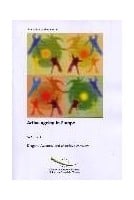


Foreword
Preface
1. Executive summary
2. Introduction
3. The proportion of oldest old in the member states of the Council of Europe: an attempt for categorisation
4. Changing age and sex structures, 2000-2050 (by sub-group)
5. Living arrangements
6. On health and disabilities
7. Conclusions
References ; list of tables, list of figures, list of maps



Attention, en vertu de nos conditions générales de vente, l'achat des PDF/epub est réservé aux particuliers.
